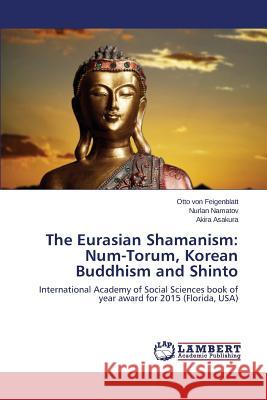The Eurasian Shamanism: Num-Torum, Korean Buddhism and Shinto » książka
The Eurasian Shamanism: Num-Torum, Korean Buddhism and Shinto
ISBN-13: 9783659753121 / Angielski / Miękka / 2015 / 156 str.
The territory of Northern Eurasia, Central Asia, Mongolia and Inner Asia, Korea and Japan populated Finno-Ugric and Altaic peoples. These people have a common language structure, mentality and religious worldview. The religious worldview of these people based on Eurasian shamanism. Shamanism includes: 1. The Cult of Heaven (Num-Torum in Finno-Ugric peoples, Tengri in Turkic-Mongol peoples, Shang-Di in the northern Chinese and Manchurs peoples, Korean Shamanism and the Japanese Shinto) 2. The cult of ancestor spirits 3. Animism: the cult of the wolf, the bear, bull .. 4. The cult of nature spirits The population of Finno-Ugric and Altaic peoples were warlike nomads: the Huns, the proto-Hungarians, Tataro-Mongols, Turks, Manchurs and northern Chinese tribes. Women were warriors and had equal rights with men. Concept the cult of Heaven recognized the variability of worship Heaven through Christianity, Buddhism and Islam.
The territory of Northern Eurasia, Central Asia, Mongolia and Inner Asia, Korea and Japan populated Finno-Ugric and Altaic peoples. These people have a common language structure, mentality and religious worldview. The religious worldview of these people based on Eurasian shamanism. Shamanism includes: 1. The Cult of Heaven (Num-Torum in Finno-Ugric peoples, Tengri in Turkic-Mongol peoples, Shang-Di in the northern Chinese and Manchurs peoples, Korean Shamanism and the Japanese Shinto) 2. The cult of ancestor spirits 3. Animism: the cult of the wolf, the bear, bull .. 4. The cult of nature spirits The population of Finno-Ugric and Altaic peoples were warlike nomads: the Huns, the proto-Hungarians, Tataro-Mongols, Turks, Manchurs and northern Chinese tribes. Women were warriors and had equal rights with men. Concept the cult of Heaven recognized the variability of worship Heaven through Christianity, Buddhism and Islam.











